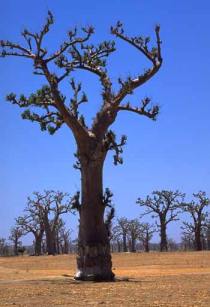7.4.3: Tropical Wet/Dry (Savanna) Climate
- Page ID
- 21717
\( \newcommand{\vecs}[1]{\overset { \scriptstyle \rightharpoonup} {\mathbf{#1}} } \)
\( \newcommand{\vecd}[1]{\overset{-\!-\!\rightharpoonup}{\vphantom{a}\smash {#1}}} \)
\( \newcommand{\id}{\mathrm{id}}\) \( \newcommand{\Span}{\mathrm{span}}\)
( \newcommand{\kernel}{\mathrm{null}\,}\) \( \newcommand{\range}{\mathrm{range}\,}\)
\( \newcommand{\RealPart}{\mathrm{Re}}\) \( \newcommand{\ImaginaryPart}{\mathrm{Im}}\)
\( \newcommand{\Argument}{\mathrm{Arg}}\) \( \newcommand{\norm}[1]{\| #1 \|}\)
\( \newcommand{\inner}[2]{\langle #1, #2 \rangle}\)
\( \newcommand{\Span}{\mathrm{span}}\)
\( \newcommand{\id}{\mathrm{id}}\)
\( \newcommand{\Span}{\mathrm{span}}\)
\( \newcommand{\kernel}{\mathrm{null}\,}\)
\( \newcommand{\range}{\mathrm{range}\,}\)
\( \newcommand{\RealPart}{\mathrm{Re}}\)
\( \newcommand{\ImaginaryPart}{\mathrm{Im}}\)
\( \newcommand{\Argument}{\mathrm{Arg}}\)
\( \newcommand{\norm}[1]{\| #1 \|}\)
\( \newcommand{\inner}[2]{\langle #1, #2 \rangle}\)
\( \newcommand{\Span}{\mathrm{span}}\) \( \newcommand{\AA}{\unicode[.8,0]{x212B}}\)
\( \newcommand{\vectorA}[1]{\vec{#1}} % arrow\)
\( \newcommand{\vectorAt}[1]{\vec{\text{#1}}} % arrow\)
\( \newcommand{\vectorB}[1]{\overset { \scriptstyle \rightharpoonup} {\mathbf{#1}} } \)
\( \newcommand{\vectorC}[1]{\textbf{#1}} \)
\( \newcommand{\vectorD}[1]{\overrightarrow{#1}} \)
\( \newcommand{\vectorDt}[1]{\overrightarrow{\text{#1}}} \)
\( \newcommand{\vectE}[1]{\overset{-\!-\!\rightharpoonup}{\vphantom{a}\smash{\mathbf {#1}}}} \)
\( \newcommand{\vecs}[1]{\overset { \scriptstyle \rightharpoonup} {\mathbf{#1}} } \)
\( \newcommand{\vecd}[1]{\overset{-\!-\!\rightharpoonup}{\vphantom{a}\smash {#1}}} \)

Geographical Location
The Tropical Wet/Dry climate, classifications Aw and As, lies at latitudes of about 5o - 10o and 15o - 20o. Broad expanses of the savanna exist in north and south central Africa, the Llanos of Venezuela, the Campos of Brazil, much of northern and eastern India, western Central America, the Caribbean Islands, south Florida, Myanmar (Burma) and the Indo-Chinese Peninsula.
Distinguishing Characteristics
Temperature
Located at a higher latitude, the variation in insolation is greater, and hence, this climate has a larger annual temperature range than the other tropical wet climates. However, the average annual temperature is similar to that of the other tropical wet climates. Mean monthly temperatures in the Tropical Wet/Dry climate range from 18oC (64.4oF) to above 25oC (77oF). Like the monsoon climate, the maximum temperature tends to occur in late spring to early summer prior to the onset of the rainy season. There may be a secondary maximum after the rainy period. Annual temperature ranges increase as one moves poleward through the climate. Daily temperature ranges are greatest during the dry season and are a bit larger than the rainy tropical climates. Diurnal temperature ranges of 10oC to 15oC during winter are not uncommon. During the summer, high daily temperatures, small temperature ranges, and high humidity create the same uncomfortable conditions as those found in the rainy tropics.
Precipitation

The Tropical Wet/Dry climate is the driest of the tropical wet climates. Like the monsoon climate, it has a distinct seasonality to its precipitation. However, its wet season is much shorter and receives far less precipitation than the monsoon climate. The seasonality of precipitation is related to the migratory movement of the ITCZ and Subtropical High. During the high sun season the ITCZ dominates, causing convergent uplift, along with the ever-present convection to promote the production of precipitation. During this period, warm and moist mE and mT air masses dominate.
During the low sun season, the ITCZ moves out and the subtropical high moves in, suppressing precipitation and initiating the long drought period. The exceedingly warm and dry cT air masses dominate during this time of the year.
Variability of precipitation makes it very difficult for agriculture. Nairobi, Kenya averages 86 cm (33.9 in) of rainfall, but from year-to-year can vary from 50 (9.7 in) to 150 cm. (59 in) The drier the savanna location, the more unreliable the precipitation. Rains are essential in greening the savanna, and animals migrate with the seasonal rhythms in search of water and pasture.

